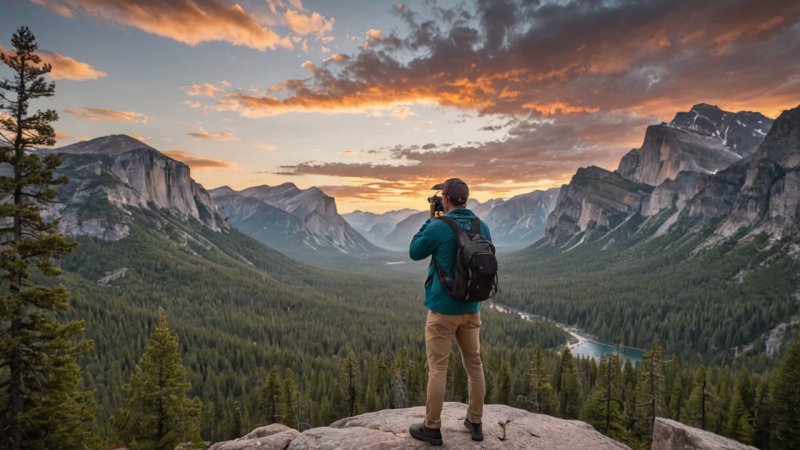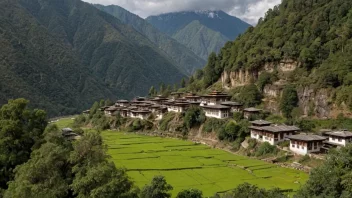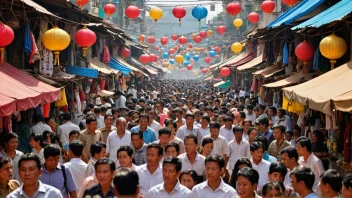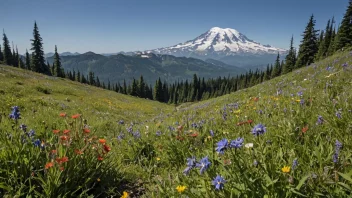Nature photography is a captivating way to connect with the great outdoors, and North America offers some of the best landscapes and wildlife for photographers. In this guide, you will learn how to prepare for a nature photography trip, choose the right locations, and capture breathtaking images that truly reflect the beauty of nature.
Step 1: Research and Choose Your Destination
The first step in your nature photography journey is selecting the right destination. North America is vast and diverse, so consider what type of landscapes or wildlife you wish to capture. Here are some iconic locations:
- Yosemite National Park, California - Known for its dramatic cliffs and waterfalls.
- Banff National Park, Canada - Famous for its turquoise lakes and mountain ranges.
- Everglades National Park, Florida - A unique ecosystem teeming with wildlife.
- Great Smoky Mountains, Tennessee/North Carolina - Renowned for its misty mountains and diverse flora.
- Yellowstone National Park, Wyoming - Home to geysers, hot springs, and abundant wildlife.
Step 2: Plan Your Trip
Once you have chosen your destination, it’s time to plan your trip. Consider the following:
- Best Time to Visit: Research the best seasons for photography in your chosen location. Spring and fall often provide vibrant colors, while summer may offer lush greenery.
- Weather Conditions: Check the weather forecast and be prepared for sudden changes. Dress appropriately and ensure your gear is safe from the elements.
- Permits and Regulations: Some national parks require permits for photography. Check the park’s website for any restrictions or regulations.
Step 3: Prepare Your Gear
Your camera gear is essential for capturing stunning images. Here’s a list of items you should consider packing:
- Camera: A DSLR or mirrorless camera is ideal for nature photography.
- Lenses: Bring a variety of lenses, such as a wide-angle lens for landscapes and a telephoto lens for wildlife.
- Tripod: A sturdy tripod is essential for low-light conditions and long exposure shots.
- Filters: Use polarizing filters to reduce glare and enhance colors.
- Extra Batteries and Memory Cards: Always pack extras, as you don’t want to miss a great photo opportunity.
Step 4: Master Your Techniques
Understanding basic photography techniques can enhance your images significantly. Here are some tips to improve your nature photography skills:
- Composition: Use the rule of thirds to create balanced and interesting compositions. Place your subject off-center for a more dynamic photo.
- Lighting: The golden hour (shortly after sunrise or before sunset) offers the best natural light for photography. Plan your shoots around these times.
- Focus on Details: Don’t just capture wide landscapes; zoom in on the details of nature – flowers, textures, and wildlife.
- Patience: Wildlife photography often requires waiting for the right moment. Be patient and observant.
Step 5: Edit Your Photos
After capturing your images, editing can enhance their quality. Consider these editing tips:
- Software: Use photo editing software like Adobe Lightroom or Photoshop for adjustments.
- Basic Adjustments: Adjust exposure, contrast, and saturation to bring your images to life.
- Cropping: Crop your photos for better composition if needed, but avoid excessive cropping that may reduce image quality.
Step 6: Share and Reflect
Once your photos are edited, it’s time to share them! Consider the following:
- Social Media: Share your best shots on platforms like Instagram or photography forums to gain feedback.
- Prints: Consider printing your favorite images for display at home or as gifts.
- Reflection: Reflect on your photography journey and think about what worked well and what could be improved for your next trip.
In summary, capturing stunning nature photography in North America involves researching your destination, planning your trip, preparing your gear, mastering photography techniques, editing your photos, and sharing your work. Remember to be patient and enjoy the beauty of nature, as it is an experience as rewarding as the photographs you will capture. Happy shooting!






